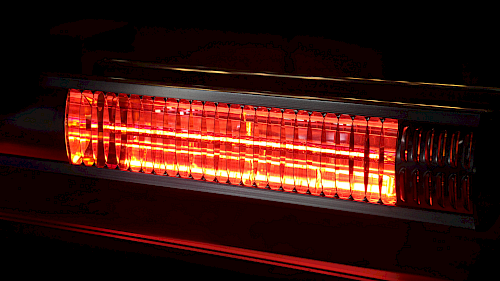
The Ultimate Guide to Infrared Heating Solutions
Infrared heating solutions are changing industrial and commercial applications, offering precise, energy-efficient, and reliable heating. This guide provides facility managers, industrial engineers and energy consultants with a comprehensive understanding of infrared technology, its applications, advantages over traditional heating methods and practical considerations for implementation.
1. Introduction to Infrared Technology
Infrared heating uses electromagnetic radiation to directly warm objects and surfaces rather than heating the surrounding air. This approach offers faster, more efficient, and targeted heating, ideal for industrial and commercial environments where precise temperature control is critical.
Key points:
- Infrared heaters emit radiation in different wavelengths: near, medium, and far infrared, each suitable for specific applications.
- Unlike conventional heating, infrared solutions reduce energy waste by transferring heat directly to the object rather than the air.
- Infrared heating solutions are compatible with both indoor and outdoor environments, providing flexibility for factories, warehouses, and outdoor workspaces.
Learn more about our infrared heating range.
2. Applications in Various Industries
Infrared heating solutions are highly versatile and widely used across industries:
Food Processing
- Rapid drying, curing, and baking processes.
- Ideal for industrial ovens, dehydrators, and pasteurisation systems.
- Ensures consistent product quality while reducing energy consumption.
Automotive & Manufacturing
- Paint drying and curing in automotive workshops.
- Heat treatment for metal components.
- Precise, localised heating avoids overheating surrounding areas.
Wood Processing
- Infrared heating is used for drying timber, veneer, and plywood.
- Provides even, controlled drying, reducing defects like warping or cracking.
- Faster drying times than traditional methods, improving throughput and energy efficiency.
- Ideal for both small workshops and large-scale industrial timber processing facilities.
Healthcare & Laboratories
- Sterilisation of instruments and equipment when combined with UV technologies.
- Maintaining controlled environments for sensitive materials.
Commercial & Outdoor Spaces
- Infrared patio heaters for restaurants and public areas.
- Comfort heating for staff and visitors without excessive energy costs.
UK and Global Focus: Victory’s partnerships with DPL and Quartz extend these solutions globally, providing specialised industrial and commercial systems beyond the UK market.
3. Comparative Analysis: Infrared vs. Traditional Heating Methods
| Feature | Infrared Heating | Traditional Heating (Convection) |
|---|---|---|
| Heat Transfer | Direct to objects/surfaces | Heat air first, then objects |
| Efficiency | High; minimal heat loss | Lower; heat loss through air circulation |
| Response Time | Immediate | Slow; takes time to warm environment |
| Maintenance | Low; fewer moving parts | Higher; fans, ducts, and radiators require upkeep |
| Application | Precise & localised | General heating of spaces |
Takeaway: Infrared heating solutions are particularly effective where energy efficiency, speed, and precision are critical.
Explore our industrial infrared heaters for factory and warehouse applications.
4. Energy Efficiency and Cost Savings
Infrared systems provide measurable savings compared to conventional heating:
- Lower energy consumption: Direct heat reduces wasted energy.
- Reduced operational costs: Faster heating means shorter production cycles.
- Sustainability benefits: Less energy use contributes to environmental targets and reduces carbon footprint.
Case studies from industrial sites in the UK demonstrate up to 30% savings in energy costs when replacing traditional systems with infrared heating solutions.
5. Maintenance and Safety Considerations
While infrared heaters are durable and reliable, proper maintenance ensures longevity and safety:
- Regular inspection: Check elements for wear or damage.
- Cleaning: Dust and debris can reduce efficiency.
- Positioning: Ensure heaters are installed at recommended distances from surfaces and personnel.
- Training: Staff should understand operational and safety protocols.
UK regulations and international standards must be adhered to, especially in industrial and commercial settings.
6. Choosing the Right Infrared Heater
- Shortwave: High-intensity, instant heat for large, open, or drafty spaces.
- Medium wave: Balanced output for general industrial or commercial heating.
- Far-infrared: Gentle, prolonged heat for enclosed, well-insulated areas.
Our IR experts can help select the right wavelength, power and placement for maximum efficiency.
7. Implementing Infrared Heating Solutions with Victory
Infrared heating solutions offer a modern, energy-efficient alternative to traditional heating, ideal for a wide range of industrial, commercial and outdoor applications. With Victory’s expertise and global partnerships with DPL and Quartz, businesses can implement tailored solutions that optimise efficiency, reduce costs and maintain high performance.
Whether in the UK or globally, adopting infrared heating solutions ensures your facilities stay at the forefront of industrial heating technology.
Contact us today to explore custom infrared heating solutions for your facility. Get in touch to speak with our specialists.
